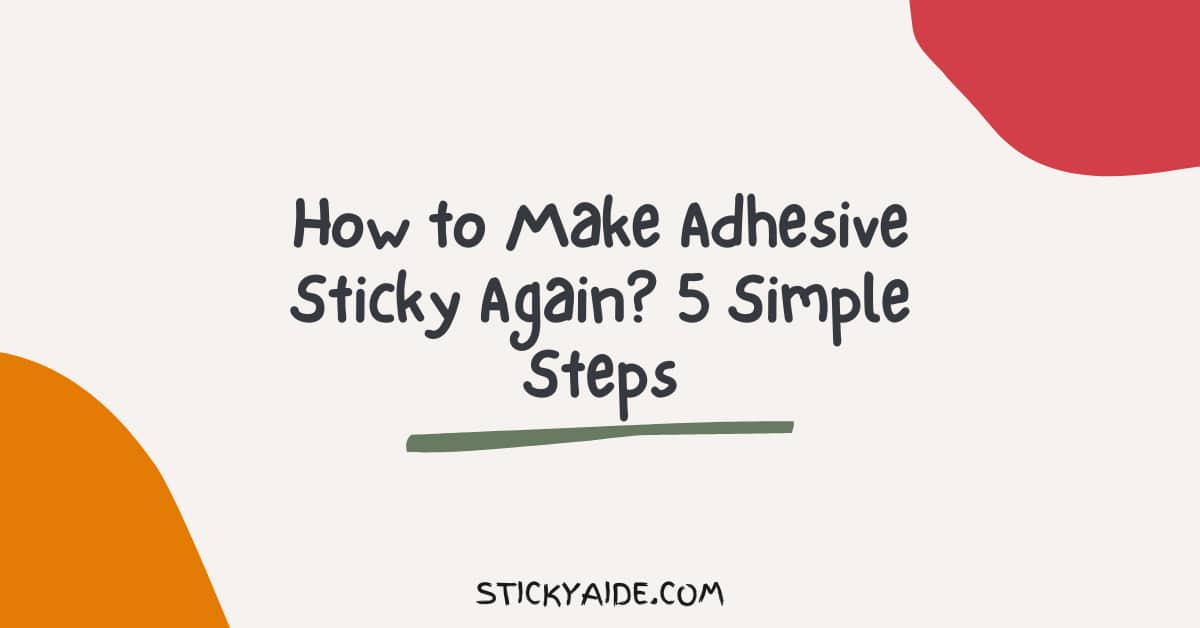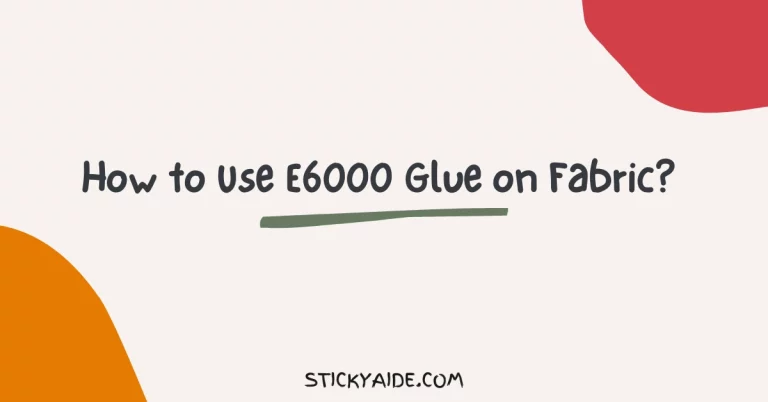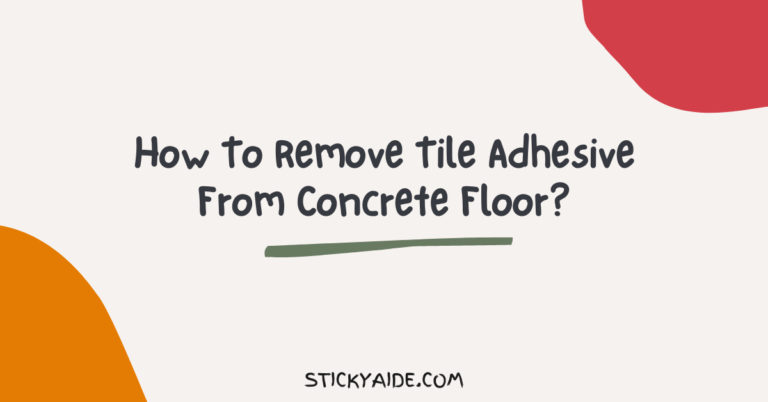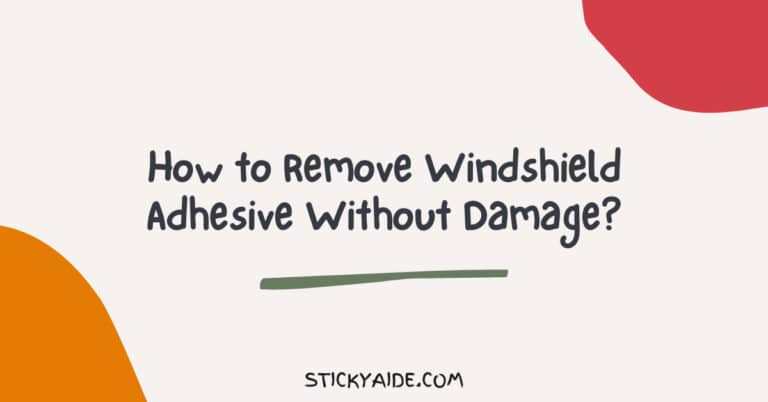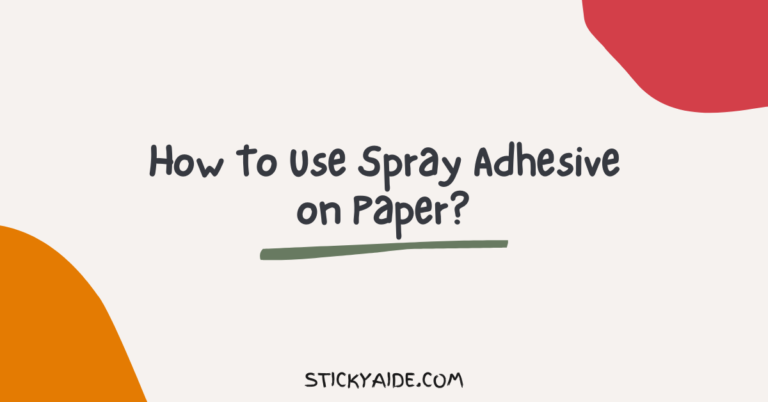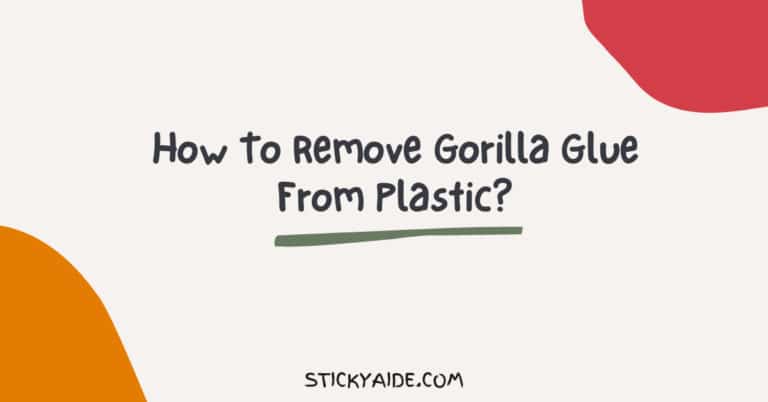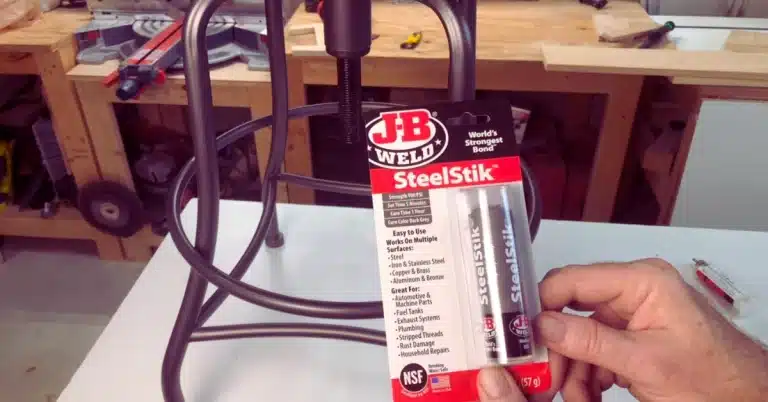Have you ever wondered how to make adhesive sticky again? If you’ve ever used adhesive or something that had adhesive on it (like a Post-It note), you know how important it is to keep the adhesive itself clean and sticky, so it doesn’t lose its ability to stick objects together.
Here are five simple steps to make your next adhesive sticky again after just five minutes of cleaning with one of these easy techniques.
Read More: How to Make a Sticker Sticky Again?
Read More: How to Make Super Glue Stronger?
How to Make Adhesive Sticky Again?
Here are 5 simple steps to make adhesive sticky again. Note that this process may not work for all types of adhesives, and the level of restored stickiness may vary.
Step 1 – Clean the Adhesive Surface
When an adhesive loses its stickiness, one potential cause is the build-up of dust, oil, dirt, or other contaminants. So, the first step is to clean the adhesive surface.
Dampen a clean cloth or sponge with warm water and mild dish soap. Proceed to clean the adhesive surface with this damp cloth gently, taking care not to scrub too hard or cause any damage to the adhesive layer beneath.
After cleaning, use a dry towel to pat the surface dry. The adhesive must be completely dry before moving on to the next step, as any residual moisture could interfere with the adhesive’s performance.
Step 2 – Dissolve the Old Adhesive
Over time, the adhesive could have hardened or become less sticky for various reasons. To reactivate the stickiness, a solvent like rubbing alcohol (also known as isopropyl alcohol) can be used.
Take a clean cloth or cotton swab and moisten it with some solvent. Rub this on the adhesive gently.
It’s important not to douse the surface in the solvent as this could risk entirely removing the adhesive layer. You want to soften and reactivate the existing adhesive, not remove it.
Read More: How to Remove 3M Adhesive from Walls?
Step 3 – Apply a New Layer of Adhesive
If cleaning and dissolving the old adhesive doesn’t provide the desired level of stickiness, applying a new layer of adhesive may be necessary.
The kind of adhesive you choose will depend on what the object in question is. For paper-based items, a glue stick or craft glue could work. For other materials, you might require a spray adhesive.
When applying the adhesive, ensure it’s applied evenly and thinly over the existing adhesive. Use a spray adhesive in a well-ventilated area, and ensure surrounding items are protected from any potential overspray.
Step 4 – Let it Dry
Once the new layer of adhesive has been applied, it’s time to let it dry. This step is important because drying allows the adhesive to form strong bonds, resulting in better stickiness.
The amount of time required for drying will vary based on the type of adhesive used.
Generally, it’s a good idea to wait for at least a few hours; in some cases, you might need to let it dry overnight.
Step 5 – Test the Adhesive
You can test its stickiness after the adhesive has been allowed sufficient time to dry. Please do this by trying to stick the object to the surface you want it to adhere to.
If it sticks well and holds up, the process has been successful, and you’ve restored the adhesive’s stickiness. If it doesn’t stick well, you may need to repeat the process or consider using a stronger adhesive.
Remember, the success of these steps will depend on the specific adhesive and the surfaces involved. If you need to determine how the adhesive or solvent will react with the surfaces, always test a small, less visible area first.
Does heat make stickers stick better?
If a sticker has become unstuck from a surface, you can make it stick again by applying heat. So, with stickers that have become unstuck because of colder temperatures, putting them in your car on a hot day should help re-stick them.
The opposite is true for stickers that have started to peel off because of excessive heat or humidity. You’ll need to cool things down and dry out any adhesive before trying to reapply a sticker.
Also, don’t use glues; they don’t work as well as heat. If a sticker has become unstuck from glass, try running cold water over it until it sticks again.
Can you make a sticker sticky again?
It’s possible, but remember that not all stickers are meant to be repositioned. There are two kinds of stickers on sale at every store: temporary and permanent.
Temporary stickers typically have a clear, plastic removable layer over the top so you can position them correctly before peeling them away.
Once you peel off that protective layer, you won’t be able to reposition them again without damaging your walls or other surfaces. If that’s what you’re dealing with, it’s time for new wall decor!
But suppose your sticker is a vinyl decal with a backing material made of cloth or paper. In that case, it may have been manufactured as permanent wall decor, meaning you shouldn’t reposition it once applied.
Does alcohol make adhesive sticky again?
No, alcohol generally does not make adhesive sticky again. In fact, alcohol is often used as a solvent to remove adhesive residues or to clean surfaces before applying adhesive.
Alcohol can break down the adhesive properties and reduce stickiness. If you are looking to enhance the adhesive properties of an adhesive, using alcohol is not recommended.
It’s best to follow the manufacturer’s instructions or seek specific adhesive recommendations for your particular needs.
Last Opinion
When working with a project requiring adhesive, please do your best to ensure it’s still usable. Don’t be afraid to test out other methods or purchase new supplies when things get tough.
It could save you time and money in the long run! Just like any tool, adhesives need maintenance and can get worn down with regular use. Think of them as your go-to problem solvers and treat them accordingly!

